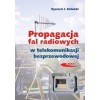- Out-of-Stock



No product available!
No product available!
No product available!
No product available!
No product available!
No product available!
Angular contact strip in black, single-row, female, 1x8, pitch 2.54mm, THT, RoHS. PB08R
No product available!
HK Body clips A (10Pcs/Bag) - 110BS, A2003, A2010, A2027, A2029, A3007 and A3015 (14125)
No product available!
Xilinx Virtex-5 LXT ML555 FPGA Development Kit for PCI Express, PCI-X, and PCI Interfaces
No product available!
AVT kit for self-assembly of an extremely effective bomb clock. AVT3128 B
No product available!
No product available!
No product available!
Sonictek A is a concentrated and reusable liquid for ultrasonic cleaners by Kryptonek, effectively washing a wide range of contaminants, including fats, oils, greases and rust, as well as binding metal ions, available in a practical 1 liter plastic bottle
No product available!
No product available!
No product available!
We know you love car modelling and you love the Ugears Dream Cabriolet, Roadster, and U-9 Grand Prix. Well, make room on the shelf, because a powerful new mechanical model just muscled its way into the Ugears Automotive collection. Introducing the Drift Cobra Racing Car, a beautifully-styled, two-seat convertible—our twist on what may be the most revered sports car of all time: the Shelby Cobra 427. The Cobra 427, produced between 1965-67, had a 7.0 litre 450-510 horsepower engine, did 0-60 mph in just over 4 seconds, and had a top speed of 185 mph. UGears 70161
No product available!

